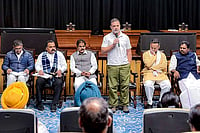In the fast-evolving digital economy, security and transparency are emerging as the twin virtues of trust—especially when it comes to NFTs and Tokenization. Both the technologies are transforming the manner in which assets—be they physical or digital—are owned, transferred, and valued. Utilizing blockchain's decentralization, they ensure transactions are transparent, immutable, and secure.
NFTs (Non-Fungible Tokens) represent one-of-a-kind digital property—art, music, collectibles, or property—while tokenization divides physical or digital property into a number of digital tokens that each hold a part-ownership or share. They are creating a new front for ownership and investment in transparency and security.
Understanding NFTs and Tokenization
Before discussing transparency and security, one needs to understand the nature of NFTs and Tokenization:
Aspect | NFT’s | Tokenization |
Definition | Unique non-interchangeable digital assets stored on a blockchain. | The process of converting real-world or digital assets into divisible blockchain-based tokens. |
Examples | Digital art music gaming assets certificates. | Real estate shares company stocks gold intellectual property. |
Ownership Type | Exclusive and individual. | Fractional and collective. |
Value Driver | Rarity and uniqueness. | Asset value and liquidity. |
Both systems rely on blockchain to maintain transparency (open record-keeping) and security (protection from tampering or duplication).
The Function of Transparency in NFTs and Tokenization
Transparency is one of the pillars of blockchain technology. All transactions with NFTs and Tokenization are kept on a public ledger which can be verified by anyone.
Principal Benefits of Transparency:
Open Verifying: Anyone can trace the origin, ownership history, and movement of tokens or NFTs.
Eliminates Intermediaries: Trust is transferred from central authorities to the network.
Prevents Fraud: Open transaction records minimize the opportunity for counterfeit or fake assets.
Favors Fair Valuation: Asset prices are established using open market information, not secret transactions.
Example:
An artist releasing NFTs of digital art can display evidence of authenticity and past trades on the blockchain, assuring collectors that they're purchasing an original work.
Security in NFTs and Tokenization: Safeguarding Digital Assets
Security is the second pillar guaranteeing long-term success for NFTs and Tokenization. Blockchain's cryptographic architecture makes every token or NFT impossible to counterfeit, modify, or double-spend.
Security Features Enhancing NFTs and Tokenization:
Decentralization: The network isn't controlled by a single entity, minimizing hacking threats.
Encryption: Strong cryptography secures digital identities and ownership data.
Smart Contracts: Automatic contracts enforce ownership transfers and royalty payments securely.
Immutable Records: Transactions cannot be altered or erased once recorded.
That being said, although the blockchain is secure, the users need to be careful from off-chain threats such as phishing, imposter marketplaces, and wallet hacks.
Transparency and Security: A Force Unbroken
Where transparency and security meet, they create a system of trustless trust—where users can partake in transactions without knowing or trusting each other.
They collectively:
Establish investor trust in tokenized projects.
Establish authenticity of NFTs.
Encourage accountability in digital markets.
Develop new models for regulation and compliance.
Steps to Ensure Transparency and Security in NFTs and Tokenization
Use Verified Platforms: Go with marketplaces or exchanges that have a strong reputation and verified listings.
Verify Smart Contract Audits: Token or NFT contracts should have been third-party audited.
Facilitate Multi-Factor Authentication: Secure wallets with extra security layers.
Keep Off-Chain Transparent: Post project information, audit reports, and ownership documents in the open.
Stay Informed: Stay current with developing blockchain regulations and security measures.
Pros and Cons of Transparency and Security in NFTs and Tokenization
Pros | Cons |
Builds trust among investors and creators | Public visibility may compromise privacy. |
Reduces fraud and counterfeiting. | Blockchain vulnerabilities or coding flaws can be exploited. |
Promotes fair pricing and open data. | Complex security procedures can hinder adoption. |
Encourages global participation. | Users still face risks from scams or fake listings. |
Despite the advantages outweighing the disadvantages, finding the perfect balance between openness and protecting data is always important.
Practical Applications of Transparent and Secure Tokenization
Tokenization in Real Estate: Investors can securely purchase fractions of property, lessening the need for intermediaries.
Art Authentication through NFTs: Artwork can be tokenized by artists, allowing for transparent provenance and secure ownership.
Supply Chain Management: Tokenized products can be traced throughout their life cycle for authenticity and transparency.
Finance and Investments: Tokenization makes secure trading of stocks, bonds, and commodities easy across the world.
These applications demonstrate how NFTs and Tokenization can marry transparency and security to make legacy industries more efficient and reliable.
Challenges Ahead
While full of promise, NFTs and Tokenization also have some challenges:
Regulatory Uncertainty: There is as yet no settled law on token ownership and trading.
Technical Barriers: Blockchain literacy is required by users to work on platforms safely.
Data Privacy: Translating openness into confidentiality is the challenge.
Scalability: As usage increases, blockchains need to process larger numbers of transactions without a decrease in security.
Addressing these problems will define how far and how quickly these technologies can transform the digital economy.
Future Prospects: Developing a Transparent and Secure Digital Economy
The future of NFTs and Tokenization lies in developing systems that are transparent to instill confidence and secure to safeguard value. Governments and institutions are working on frameworks for regulated tokenization and authenticated NFT marketplaces.
With blockchain breakthroughs such as zero-knowledge proofs and layer-2, users will be able to enjoy privacy without compromising on transparency. The ultimate vision: a world where all digital transactions are visible yet safe.
FAQs
Q1: Why does transparency matter in NFTs and Tokenization?
Transparency makes every transaction traceable, eliminating deception and enhancing trust among buyers and sellers.
Q2: How does blockchain provide security for NFTs and Tokenization?
By cryptographic encryption, decentralized storage, and tamper-proof records that render tampering virtually impossible.
Q3: Are NFTs and Tokenization totally secure?
Although the blockchain is secure, users still need to be careful of scams, unvalidated projects, and phishing schemes.
Q4: Can transparency impact privacy?
Yes. As blockchain information is public, sensitive information may be revealed unless privacy-safeguarding techniques are implemented.
Q5: What is the future of NFTs and Tokenization in international finance?
They will most probably be the basis for digital property, fractional ownership, and clear financial systems.
Conclusion: Trust Founded on Code and Clarity
Security and transparency are not merely technical attributes—these are the moral pillars of NFTs and Tokenization. Combined, they make value exchange equitable, ownership provable, and markets reliable. As digital assets keep developing, upholding these values will guarantee that this technological revolution builds toward a future based on openness, safety, and common prosperity.
























